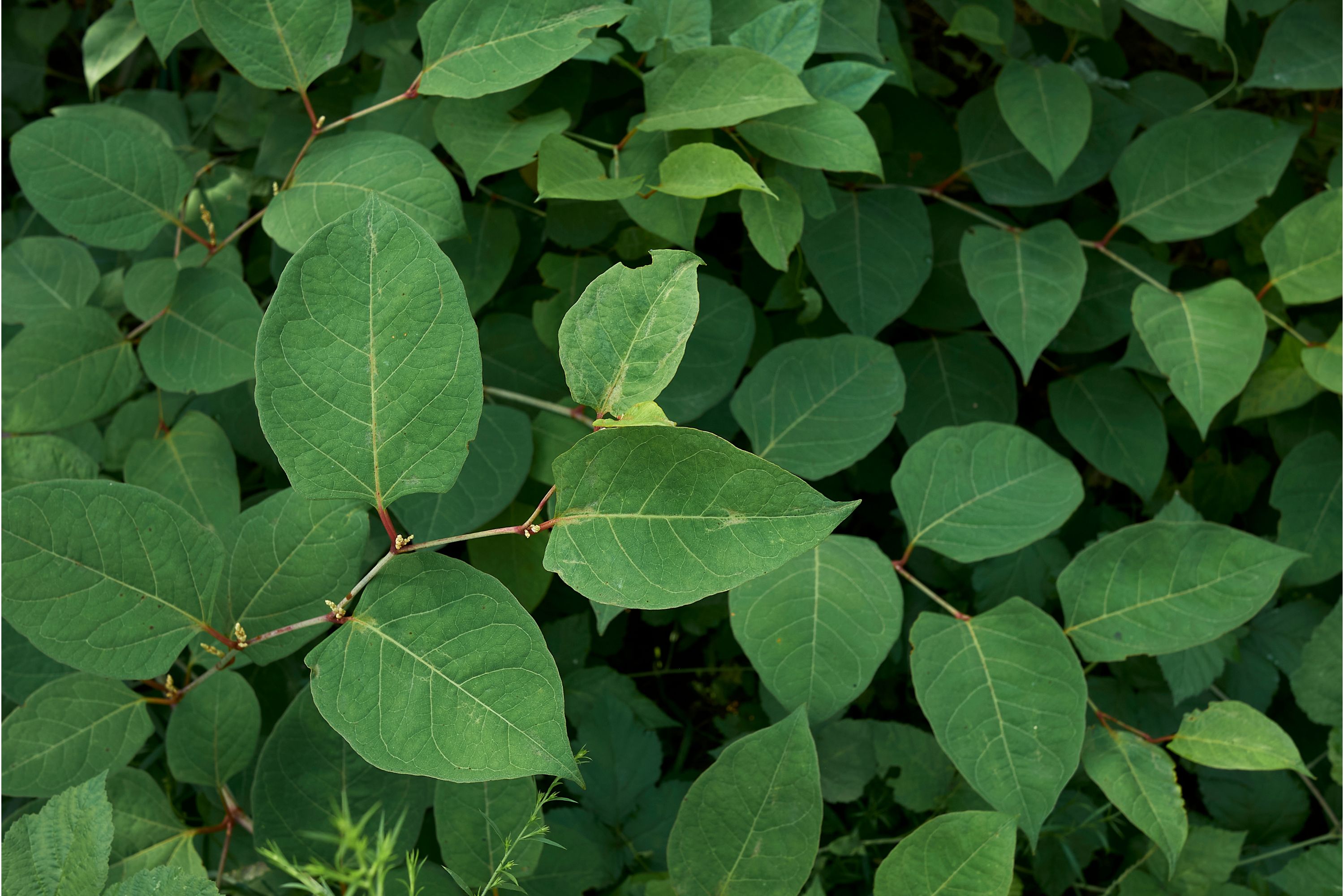Japanese knotweed
(Reynoutria japonica)

Description
Reynoutria japonica, commonly known as Japanese knotweed, is a herbaceous perennial plant that belongs to the Polygonaceae family. It is native to East Asia, including Japan, Korea, and China, and has been introduced to various parts of the world, including North America, Europe, and New Zealand. Japanese knotweed is known for its vigorous growth and ability to invade and dominate ecosystems, causing significant economic and ecological damage. Physical Characteristics Japanese knotweed is a large, shrub-like plant that grows up to 3-4 meters in height. The stem is hollow and bamboo-like, with raised nodes and a reddish-brown color. The leaves are large, up to 15-20 cm long and 10-15 cm wide, and are arranged alternately along the stem. The leaves have a distinctive heart shape with a pointed tip and a smooth, shiny surface. The plant produces small, creamy-white flowers in late summer or early fall, which are arranged in clusters along the stem. Distribution and Habitat Japanese knotweed is native to East Asia, including Japan, Korea, and China. It has been introduced to various parts of the world, including North America, Europe, and New Zealand. In these regions, it is considered an invasive species and a significant threat to native plant and animal species. Japanese knotweed grows in a variety of habitats, including riverbanks, roadsides, disturbed areas, and forest edges. It is a fast-growing plant that can tolerate a wide range of soil types and pH levels, as well as different levels of sunlight and moisture. Ecological Impacts Japanese knotweed is a highly invasive species that can outcompete and displace native plant species, leading to significant ecological damage. It grows quickly and can form dense stands that shade out other plants and reduce biodiversity. The plant's root system is extensive and can penetrate deeply into the soil, causing damage to infrastructure and buildings. Japanese knotweed also has a negative impact on wildlife habitats. The dense stands of the plant can restrict the movement of animals and prevent them from accessing food and water sources. The plant's leaves and stems are not palatable to most herbivores, which can lead to a decline in grazing species in affected areas. Control and Management The control and management of Japanese knotweed can be challenging and require a multi-faceted approach. Some of the methods used for controlling Japanese knotweed include: Mechanical Control: This involves physically removing the plant or cutting it down to ground level. This method is most effective during the early stages of growth and can be used in combination with other control methods. Chemical Control: The use of herbicides can be effective in controlling Japanese knotweed. Glyphosate is a commonly used herbicide that can be applied directly to the plant or through foliar spray. This method should be carried out by trained professionals to ensure safety and efficacy. Biological Control: The use of biological control agents, such as insects or fungi, can be effective in controlling Japanese knotweed. These agents are specifically targeted to the plant and can be used in combination with other control methods. Prevention: Preventing the spread of Japanese knotweed is essential to control its growth. This involves proper disposal of plant material and the use of best management practices, such as avoiding soil disturbance in areas where the plant is present. Uses Despite its invasive nature, Japanese knotweed has several beneficial uses. In traditional Chinese medicine, the plant's root has been used to treat a variety of ailments, including respiratory and cardiovascular conditions. The plant's young shoots can also be eaten and are used in some Asian cuisine. Conclusion Japanese knotweed is a highly invasive species that can cause significant ecological and economic damage.
Taxonomic tree:







